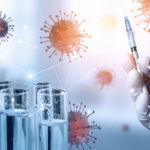News
How Do Vaccines Work?

The ability to protect us from disease is the greatest medical innovation ever. The ability to vaccinate has prevented 300 million illnesses, more than 20 million hospitalizations, and 1 million deaths (approximate numbers). These statistics are CDC provided and are provided prior to the pandemic. Leading up to a discussion of the COVID-19 vaccine and the innovation behind it is history and the different types of vaccinations already existing and already at work in our bodies protecting us and those in our lives. In order to understand how COVID-19 vaccines work it is important to know how different vaccines provide the body protection against diseases.
Live, Attenuated Virus
These viruses are weakened, non-replicative strains. They are not expected to cause the disease but act to train the immune system. Because they are weaker species and not replicating themselves, our immune system controls their expression. However, because they are still alive, we recommend a period of one month to prevent conception after vaccination.
- Examples are: Measles, Mumps and Rubella (MMR); Varicella-Zoster (Chickenpox); and Smallpox (eradicated!)
Inactivated Virus / Killed Virus
These are virus particles that have been grown in a lab and then lose the ability to produce disease. The pathogens can be disrupted by chemicals, heat, or radiation. Regardless of the means of inactivation, they cannot produce the disease.
- Examples are: Hepatitis A, Rabies, Polio (the shot), Influenza
Conjugated / Subunits
Take the virus that causes disease, culture, and then break it open. What remains is an open bag of proteins, sugars, and fats. The goo can be purified to collect only the markers that make the virus enter the cells (antigens). These antigens, called subunits, can then be used for immunization and introduced alone or with a carrier molecule (conjugated). Because there is not a whole virus vaccine (and just a small part), it causes fewer side effects.
- Examples are: Hepatitis B, Pneumococcus and Human Papilloma Virus (HPV)
Toxoid
These are the byproducts that the virus commands the cell to make. The difference here is that the pathogen (virus or bacteria) makes a harmful substance toxic to our cells. The vaccine is made not to combat the pathogen making the toxin but the toxin itself.
- Examples are: Diphtheria and Tetanus
Recombinant Vector Vaccines
These vaccines are the most novel and bear the greatest potential for effective and responsive vaccination against emerging pathogens. They use nucleic acid (DNA and RNA) to code for the pathogens they are used to cause. The vaccine mimics natural infection and elicits an immune response without causing disease and hopefully preventing its spread.
- Examples DNA virus used or in clinical development: (Hepatitis C, Zika, and Ebola)
- Examples of RNA virus: Rabies (2013) and of course, SARS-COV-2 (COVID-19)
Contact Us
We are committed to continuing to care for our patients. We remain focused, as always, on providing you with individual care that centers on you. If you have more questions on how COVID-19 vaccines work or vaccines and pregnancy, please contact us for an initial consultation. We are here to help.


